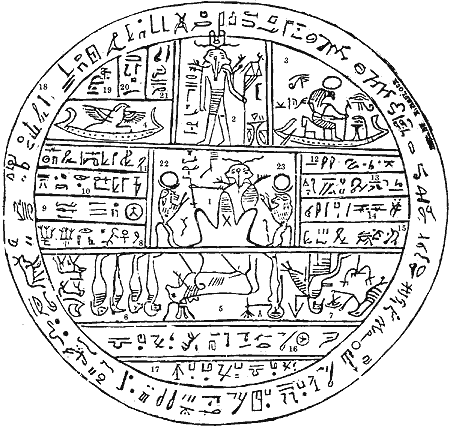This next blog post will cover the system of symbols
Scientology uses to convey its universal meanings to its followers and the
influences found in other religions. After watching the Scientology video with
Tom Cruise giving his spiel about what the principals mean to him and why
everyone should convert, I was a little confused. However, I did make some
sense of several key points and feel I have a good idea of their system of
beliefs. Scientologists deeply believe that they are the authorities on the
mind; as Tom Cruise says, “they are the authorities on improving conditions.” They
believe their practices are based on “religious” research and its doctrines are
based on “scientific” laws and principals. Through these beliefs, followers
consider themselves as saviors for human kind in any condition.
An interesting theme that can be found in other more commonly
practiced religions that is shared with Scientology is that their beliefs revolve
around the idea of a “Thetan,” an individual expression of a life force. This
idea is similar to a spirit or soul, and is believed to represent the source of
life, or life itself. As seen on page 39 of Janet Reitman’s book Inside Scientology, Hubbard defines the
foundation of Scientology and the principals of Thetans as the following....

Such an example of the idea of Thetans can be seen in Hinduism; like Hinduism, Scientology suggests a relationship between the soul and an earlier incarnation in one’s present life. In many cases, Scientology, like many other religions, borrows similar ideas from other religions and other philosophies and adopts them into their own ideologies. In Hubbard’s view, the goal of scientology is to restore this power of the Thetan, which can be done through auditing, which will be explained further down. He believed this would streamline the process to enlightenment. Like the borrowed idea of Thetans, another highly interesting idea of Scientology is where Dianetics stems from. Hubbard took similar philosophies from Sigmund Freud regarding psychoanalytical theories. Such ideas can directly be found in Dianetics; they deal with traumatic memories imbedded in one’s unconscious. Through this, Scientology is able to promise self-betterment through Dianetic therapy and overcoming these strong memories. In many ways, Scientology is based off of Freud’s theory of Psychotherapy and persuading its followers to go through with these pricey Dianetic sessions.
In this blog post, I will shed further light on Dianetic auditing
and how it directly ties into the ideologies of Scientology. The purpose of
auditing is to increase one’s spiritual awareness and self-betterment. If
applied correctly, auditing can rid the engrams (deep traumatizing memories)
from one’s body, thus restoring their natural Thetans or souls and improving
one’s everyday life. The auditing session is usually a one-on-one session
between the patient and the auditor; in many ways, this is similar to the idea
of a “confession” found in Catholicism. The task of the auditor is to aid the
patient in overcoming and understanding engrams. As the sessions increase in
frequency, they become more and more intricate, moving towards complex engrams.
Scientology’s idealistic intention is to rid the planet of engrams, where
people can live their lives free from traumatizing or scaring memories.
 Other Fundamental ideas of Scientology present two major
beliefs of the mind. They believe in two sides of the mind, the “reactive” and
the “analytical” mind. The reactive mind is believed to absorb all pain and
emotional traumas or “engrams.” To rid these engrams from the reactive mind and
free their “Thetan,” E-meters, or “tech,” are used to rehabilitate the individual’s
spiritual nature so that they may reach his or her full potential. The other
side of the mind, the “analytical” mind, is responsible for rational functions
and consciousness. The relationship both sides have with each other is the idea
of balance; for one side of the mind to be freed, the other must be, too.
Other Fundamental ideas of Scientology present two major
beliefs of the mind. They believe in two sides of the mind, the “reactive” and
the “analytical” mind. The reactive mind is believed to absorb all pain and
emotional traumas or “engrams.” To rid these engrams from the reactive mind and
free their “Thetan,” E-meters, or “tech,” are used to rehabilitate the individual’s
spiritual nature so that they may reach his or her full potential. The other
side of the mind, the “analytical” mind, is responsible for rational functions
and consciousness. The relationship both sides have with each other is the idea
of balance; for one side of the mind to be freed, the other must be, too.
Another interesting element of symbols found in Scientology
is the Scientology symbol itself. The symbol is composed of three different
symbols, “S”, “ARC” and “KRC.” The “S” stands for Scientology, “ARC” stands for
affinity, reality and community, and “KRC” stands for knowledge, responsibility
and control. These symbols represent a certain way of life and knowledge that
essentially all Scientologists strive for. The system of triangles acts in similar
ways to a trinity; its followers constantly try to achieve a balanced equality in
the encompassing representation of knowledge and ways of life.





























